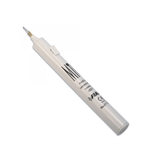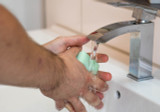First Aid - An ounce of prevention is worth a pound of cure.
An accident may happen at the work place or at home or on the play ground or while travelling. No one likes getting injured and despite all relevant safety measures people still get injured. Accidents and injuries can surely be minimised by following relevant safety measures but as the going by the experience, it has not been possible to completely eliminate them. One may encounter an accident anywhere, for example - at work, at school, whilst playing football, rugby, hockey or any other sport for that matter, whilst travelling or even at home doing the chores. Whether or not a medical setting is nearby, an accident can happen anytime, anywhere and with anyone, regardless of age. It becomes all the more important to have First Aid Kits and First Aid Trained personnel around.
Relevant authorities have stipulated and made it essential to have different First Aid Kits for different places of work because different work places are prone to different risk level and different type of injuries. Depending on the risk, type of injuries expected, proximity to qualified medical help and the number of people present different first aid kits are available to meet the requirements. First aid not only helps reducing the chances of infections that one may contract from open wounds and injuries but also can help reducing the severity of an injury.
As importance of first aid kits is unquestionable; having a well stocked first aid kit in your home, work place, cars, field of play etc. is important to deal with minor accidents and injuries. First aid kits must be within easy access to ensure the safety of everyone. As a good practice first aid kits should be kept in a cool and a dry place out of the reach of children. First aid kits should be checked regularly to ensure their the contents are within the use-by date and any replenishment/refills required are made as soon as possible.
Given below are a few items that we think are essential to have in any first aid kit:
- Plasters in a variety of different sizes and shapes (For domestic use - it might be a good idea to have a pack of assorted kids plasters)
- Small, medium or large sterile gauze dressings
- At least two sterile eye dressings
- Triangular bandages
- Crepe bandages
- Safety pins
- Disposable sterile gloves
- Tweezers
- Scissors
- Saline
- Alcohol-free cleansing wipes
- Adhesive Tape
- Bandage rolls
Example extras, obviously depending on the risk and in consultation with qualified medical personnel:
- Thermometer
- Skin rash cream, such as hydrocortisone or calendula
- Cream or spray to relieve insect bites and stings
- antiseptic cream
- painkillers such as paracetamol (or infant paracetamol for children), aspirin (not to be given to children under 16), or ibuprofen
- antihistamine tablets
We at Four Square Healthcare offer a wide variety of top quality first aid kits, first aid refills and first aid accessories to serve all your needs. Click here to visit our first aid store.
For more information, please visit:
What to do if your child has an accident
Recent Posts
-
Cauteries & Cryosurgery for minor procedures
Cauteries and cryosurgery work in a similar fashion, even though they are at opposite ends of the s …4th Jul 2019 -
Choosing the best digital thermometer
As any parent, or healthcare professional knows only too well, getting an accurate temperature read …6th Jun 2019 -
World Hand Hygiene Day
Any healthcare professional will be able to attest to the importance of good hand hygiene. 5 May 2 …1st May 2019




